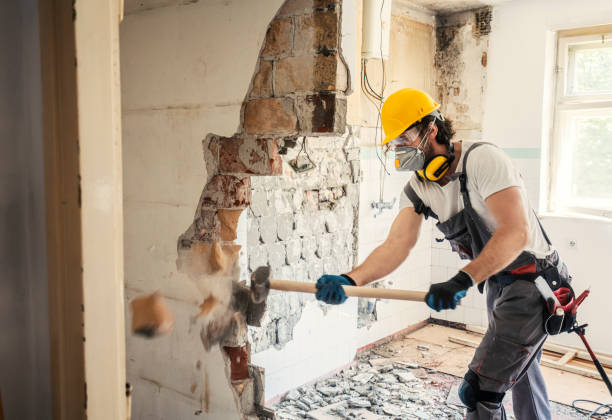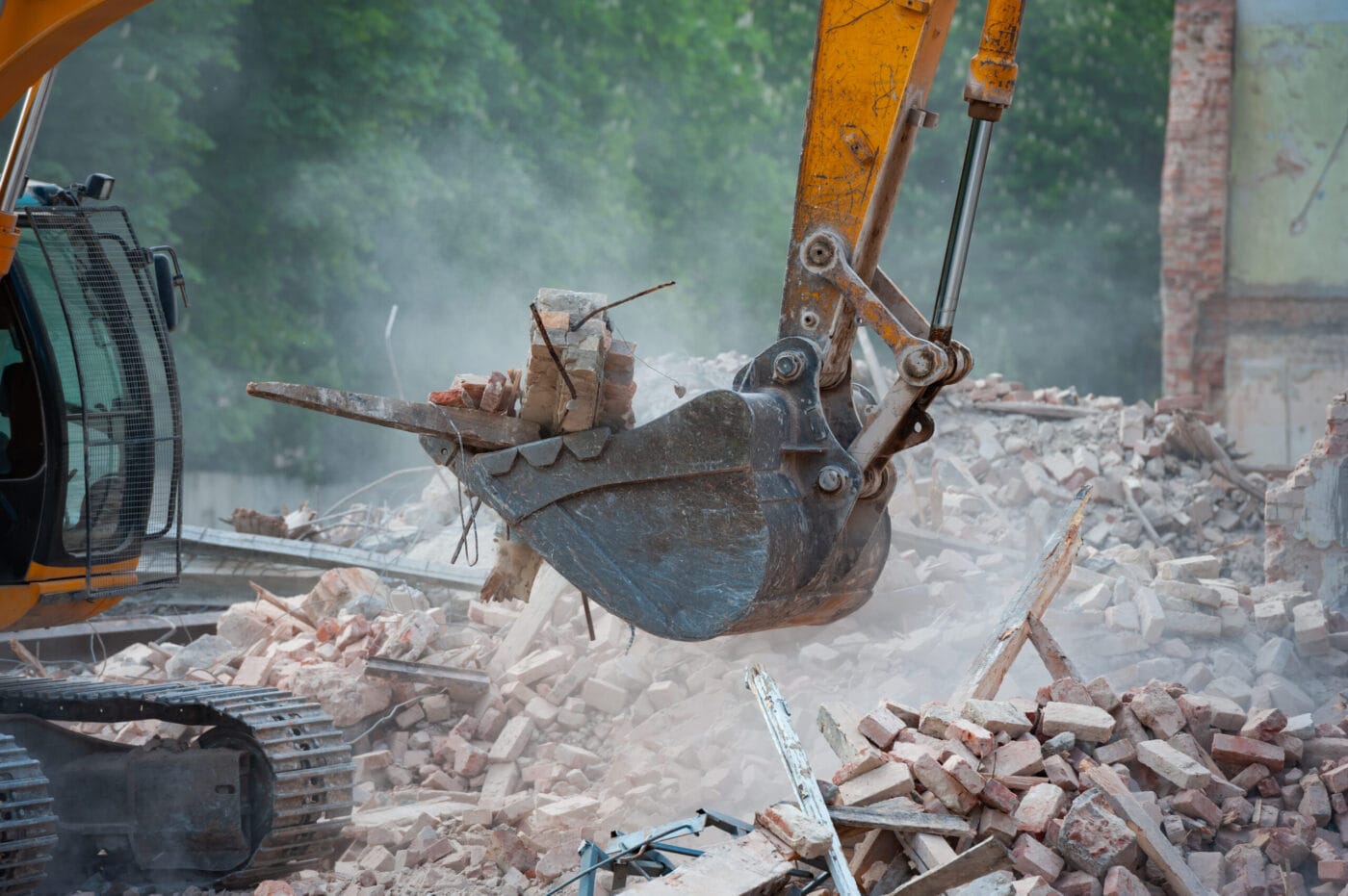Checking Out the Essential Solutions Offered by a Demolition Service Provider for Your Following Project
A demolition service provider plays a crucial role in the success of any kind of job involving the taking down of structures. Their services include important jobs such as site assessments, dangerous product administration, and strategic preparation. These professionals use innovative strategies and devices to ensure both safety and efficiency. Understanding their offerings can considerably influence the general process. What certain services should one prioritize to optimize project end results and warranty compliance?
Website Evaluation and Planning
Before any kind of demolition task can begin, a comprehensive website evaluation and planning phase is necessary. This first stage involves a comprehensive evaluation of the site to recognize structural components, existing utilities, and environmental considerations. A demolition service provider carries out an accurate examination of the facilities, keeping in mind any type of prospective difficulties that might occur throughout the demolition process.During this stage, specialists additionally gather essential details relating to zoning legislations, allows, and local policies, making sure compliance throughout the project. A careful plan is established, describing the sequence of demolition, tools demands, and safety and security protocols. This planning not just aids in mitigating threats yet also assists in approximating durations and budgets properly.
Dangerous Material Recognition and Removal
Dangerous material recognition and elimination is a vital part of demolition service provider solutions. This procedure includes recognizing various kinds of harmful products, adhering to security procedures and procedures, and making certain compliance with regulatory demands. Proper administration of these products is crucial to guard the health and wellness of employees and the environment.
Sorts Of Hazardous Materials

Safety Protocols and Procedures
Demolition jobs must abide by rigorous security protocols to effectively manage the recognition and removal of hazardous materials. Contractors generally start by conducting thorough website evaluations to recognize potential hazards, such as asbestos, lead, or mold and mildew. Making use of specific equipment, they carefully examine building materials, making certain accurate recognition. When determined, the removal process is executed with accuracy, making use of ideal containment actions to avoid direct exposure. Workers are furnished with personal safety tools (PPE) to lessen health dangers during handling and disposal. Furthermore, professionals usually apply air tracking systems to evaluate air-borne impurities, making sure a secure workplace. These precaution are crucial not just for the security of employees yet also for the surrounding community throughout the demolition procedure.
Governing Compliance Demands
Compliance with regulative demands is essential in the identification and removal of unsafe materials during demolition projects. Demolition service providers need to abide by local, state, and government laws created to ensure safety and security and ecological defense. This consists of conducting thorough inspections to identify harmful compounds such as asbestos, lead, and mold. Correct documentation is essential, as specialists need to maintain records of hazardous product analyses and elimination treatments. Additionally, trained employees are called for to implement risk-free elimination methods while decreasing dangers to health and the atmosphere. Complying with regulations not only safeguards public security but additionally safeguards service providers from legal liabilities. Involving an experienced demolition specialist warranties compliance with these essential needs, inevitably adding to the success of any kind of demolition task.
Structural Demolition Techniques
Structural demolition methods are necessary for safely and efficiently dismantling buildings. Controlled demolition approaches, such as implosion, permit for precise devastation while decreasing civilian casualties. On the other hand, discerning demolition methods focus on protecting details components of a framework, allowing targeted dismantling based on job demands.
Regulated Demolition Techniques
A selection of controlled demolition methods are utilized to safely take apart buildings while reducing risks to bordering frameworks and the environment. These strategies include explosive demolition, which makes use of thoroughly positioned fees to reduce structures in a regulated manner, and mechanical demolition, which utilizes heavy machinery for organized taking down. An additional approach is using hydraulic jacks and saws, permitting accuracy in removing certain areas of a building. Additionally, water jet cutting is used to decrease dirt and particles throughout demolition. Each method is chosen based on factors such as the building's size, area, and the close-by framework, ensuring that safety and effectiveness are focused on throughout the demolition process.
Discerning Demolition Approaches
When resolving the complexities of demolition, careful demolition strategies arise as a concentrated technique to dismantling structures while reducing and protecting useful materials waste. This approach includes carefully eliminating particular components, such as components, floor covering, or architectural elements, instead than demolishing an entire building. By employing sophisticated strategies and devices, demolition service providers can determine and remove recyclable materials, advertising sustainability and lowering disposal costs. Discerning demolition is especially helpful in remodelling jobs where existing frameworks need to be incorporated with brand-new construction. Additionally, it assists mitigate environmental impact, lining up with contemporary construction practices that focus on eco-friendliness. Ultimately, careful demolition approaches show an expanding trend towards liable building, showcasing the relevance of precise preparation and implementation in the demolition procedure.
Debris Disposal and Recycling
Effective particles disposal and recycling are vital parts of demolition professional solutions. Contractors play an essential duty in managing waste generated during demolition projects, making certain that products are dealt with efficiently and properly. By employing specialized equipment and strategies, they can arrange through debris to separate recyclable materials such as steels, concrete, and wood from non-recyclable waste - muck away.This procedure not just reduces landfill contributions however additionally advertises the reuse of important resources, aligning with sustainable building practices. Several demolition contractors preserve partnerships with reusing centers, facilitating the proper handling of materials.Additionally, they comply with certain policies relating to unsafe waste disposal, guaranteeing conformity and safety. Proper debris disposal and recycling not only streamline the demolition process yet also contribute favorably to the setting, reflecting the service provider's commitment to sustainability and responsible practices in the market
Environmental Compliance and Safety Measures
How do demolition professionals guarantee that their procedures meet environmental regulations and focus on safety and security? They stick to rigorous standards set by neighborhood, state, and federal authorities, guaranteeing compliance with laws that control waste administration, air high quality, and dangerous products. This commitment starts with thorough website assessments to recognize potential ecological risks, consisting of asbestos and lead.Demolition specialists execute safety procedures to protect workers and the bordering area. They provide training programs concentrated on safe demolition techniques, utilize personal safety equipment, and establish emergency feedback strategies. Normal security audits and evaluations are conducted to ensure that treatments are being followed.Moreover, contractors usually team up with environmental professionals to develop and maintain sustainable methods. By focusing on recycling and proper waste disposal, they decrease landfill contributions. This substantial strategy to environmental conformity and safety and security not only safeguards public wellness however also strengthens the professional's credibility as a responsible company in the demolition market.
Equipment and Technology Use
Demolition professionals take advantage of advanced tools and cutting-edge technology to improve efficiency and safety in their operations. They utilize hefty equipment such as excavators, bulldozers, and ravaging balls, developed for specific demolition tasks. Additionally, specialized tools like concrete saws and hydraulic shears allow for exact material elimination, decreasing the risk of collateral damage.Modern demolition jobs often include drones and 3D scanning technology to assess site conditions accurately, allowing professionals to prepare and carry out demolitions with greater precision. These innovations enable websites real-time tracking and assist in image source information collection, which assists in danger administration and compliance with security regulations.Furthermore, specialists might employ dirt control systems and sound decrease modern technologies to minimize ecological effect and guarantee compliance with neighborhood guidelines. By integrating these innovative devices and innovations, demolition contractors not only boost functional effectiveness but likewise enhance the total safety of their jobs, safeguarding both workers and the surrounding community.
Task Monitoring and Control
Successful task administration and sychronisation are vital for the seamless implementation of demolition jobs. A proficient demolition professional uses a specialized job manager to supervise all elements of the procedure, making sure that timelines, spending plans, and safety and security policies are strictly followed. Effective communication amongst team stakeholders, subcontractors, and members is important, facilitating fast decision-making and issue resolution.The service provider develops an extensive project plan that details each phase of demolition, from first website assessments to final particles removal. This plan also makes up any ecological factors to consider and needed licenses, straightening with local regulations.Regular development meetings and updates keep all events notified, fostering openness and responsibility. By utilizing job administration tools and techniques, the specialist can track landmarks and address capacity hold-ups proactively. Ultimately, strong job administration and sychronisation not only enhance performance yet also add to the total success of demolition tasks, making sure a smooth shift to subsequent building and construction stages.
Regularly Asked Concerns
How Do I Choose the Right Demolition Service Provider for My Project?
Picking the right demolition contractor entails examining their experience, safety and security, and reputation practices. It's crucial to obtain several quotes, inspect recommendations, and verify they are certified and insured to guarantee a successful project result.
What Is the Typical Timeline for a Demolition Job?
The typical timeline for a demolition project varies, typically ranging from a few days to a number of weeks. Elements influencing this duration consist of task dimension, complexity, permits, environmental considerations, and site preparation needs.
Are Permits Needed for All Demolition Projects?
Permits are typically required for the majority of demolition projects, as they guarantee conformity with regional policies and safety requirements. Nevertheless, particular needs might differ based upon project dimension, area, and the nature of the demolition.
What Should I Do to Prepare My Website Before Demolition Begins?
Prior to demolition begins, one ought to remove the website of particles, detach energies, protected required licenses, inform neighbors, and develop safety company website methods - muck away essex. Correct prep work assures a smooth process and decreases risks throughout the demolition job

How Can I Ensure My Project Remains Within Spending Plan?
To assure a project remains within budget, thorough preparation is vital. Establishing a detailed budget plan, monitoring costs frequently, and enabling for contingency funds can aid protect against overspending and keep monetary control throughout the task's duration. A demolition contractor conducts a specific inspection of the premises, keeping in mind any potential challenges that may emerge throughout the demolition process.During this phase, contractors also collect pertinent information pertaining to zoning regulations, permits, and regional guidelines, making sure compliance throughout the task. These techniques include eruptive demolition, which makes use of carefully placed fees to bring down frameworks in a controlled way, and mechanical demolition, which utilizes heavy equipment for organized dismantling. When dealing with the intricacies of demolition, careful demolition strategies emerge as a focused strategy to taking apart structures while maintaining valuable materials and lessening waste. In addition, specialized devices like concrete saws and hydraulic shears enable for precise material elimination, reducing the threat of collateral damage.Modern demolition tasks typically incorporate drones and 3D scanning modern technology to evaluate site conditions accurately, permitting specialists to plan and carry out demolitions with greater accuracy. Successful job monitoring and sychronisation are important for the smooth execution of demolition projects.